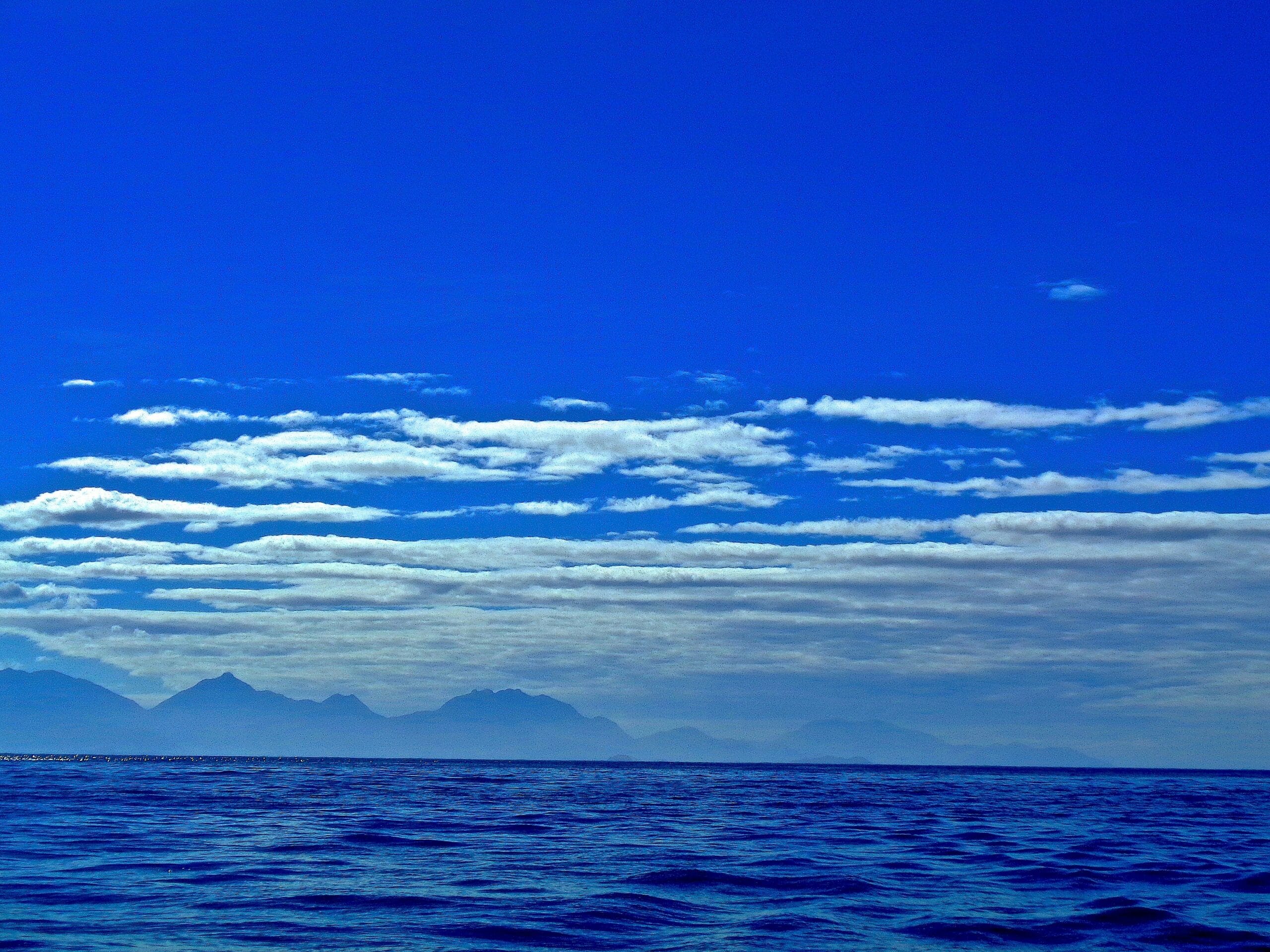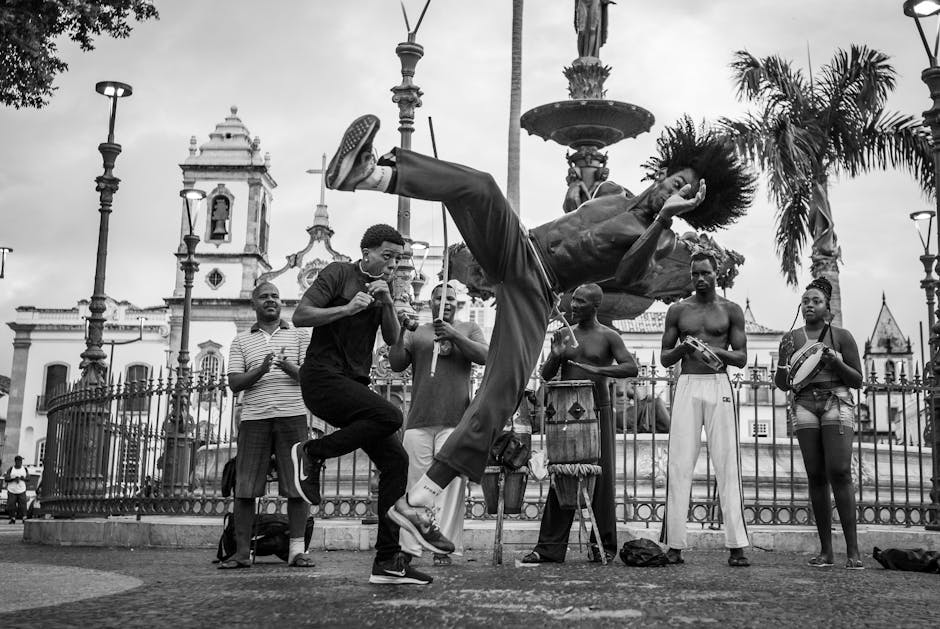Introduction to Brazil’s Low Season Travel
Brazil, a country renowned for its vibrant culture, diverse landscapes, and rich history, offers unique travel experiences throughout the year. However, the low season, typically from March to June and August to November, presents particular advantages that make it an ideal time for exploration. During these months, travelers can expect fewer crowds, allowing for a more relaxed and intimate experience with the country’s stunning destinations. Additionally, traveling in the low season often translates to lower prices on accommodations and tours, making it a more budget-friendly option.
One of the most compelling reasons to visit Brazil during the low season is the opportunity to enjoy more authentic experiences. With fewer tourists, visitors have a better chance of immersing themselves in local culture, engaging with residents, and experiencing traditional customs and festivals. The reduced influx of travelers also means that popular sites and attractions are less congested, providing a more serene and enjoyable visit.
Brazil’s vast and varied landscapes ensure that there is something for everyone, regardless of the time of year. From the lush Amazon rainforest and the majestic Iguazu Falls to the sun-kissed beaches of Rio de Janeiro and the colonial charm of Salvador, Brazil’s geographical diversity offers endless opportunities for adventure and discovery. Whether you’re interested in exploring dense jungles, lounging on pristine beaches, or delving into the country’s rich cultural heritage, Brazil’s low season allows you to do so with greater ease and at a more leisurely pace.
In essence, traveling to Brazil during the low season not only provides economic benefits and a more tranquil experience but also allows for a deeper connection with the country’s diverse landscapes and vibrant culture. This period offers an optimal balance between exploring iconic landmarks and uncovering hidden gems, making it an excellent choice for travelers seeking both adventure and relaxation.
Rio de Janeiro: Beyond Carnival
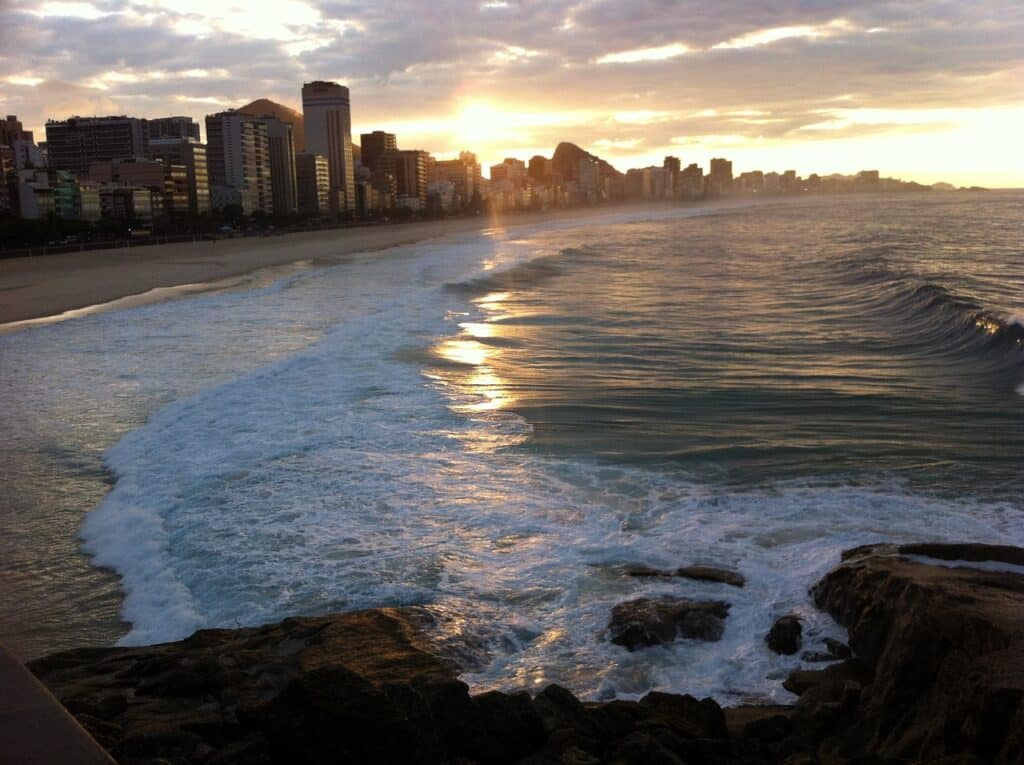
While Rio de Janeiro is globally renowned for its vibrant Carnival, visiting this dynamic city during the low season offers a distinct and equally captivating experience. The allure of Rio extends far beyond its festive peak, showcasing iconic landmarks and natural beauty in a more serene setting. Christ the Redeemer, an emblematic symbol of Brazil, is far less crowded during the off-peak months, allowing visitors to fully appreciate the panoramic views of the city without lengthy waits.
Similarly, Sugarloaf Mountain provides an awe-inspiring perspective of Rio’s stunning coastline and urban landscape. The cable car ride to the summit is more enjoyable when not jostling with throngs of tourists, and the cooler weather enhances the overall experience. Copacabana Beach, another quintessential Rio attraction, transforms into a tranquil retreat where one can leisurely stroll along the sands or enjoy local culinary delights at nearby kiosks.
Beyond these well-known sites, Rio de Janeiro in the low season offers unique experiences that are often overshadowed during the high tourist months. Tijuca National Park, one of the largest urban forests in the world, beckons with its lush trails and waterfalls. Hiking here is particularly pleasant during the cooler season, providing a refreshing escape into nature. Additionally, exploring local markets, such as the Feira de São Cristóvão, offers an authentic taste of Brazilian culture and cuisine without the hustle and bustle of peak tourist traffic.
The benefits of visiting Rio de Janeiro during the low season extend to practical aspects as well. Accommodations are often more affordable, with off-peak pricing providing better value for travelers. The cooler weather not only makes outdoor activities more enjoyable but also reduces the typical tropical humidity, making for a more comfortable stay. Thus, Rio de Janeiro beyond Carnival presents a compelling case for off-season travel, combining iconic attractions with unique local experiences and practical advantages.
Salvador: A Taste of Afro-Brazilian Culture
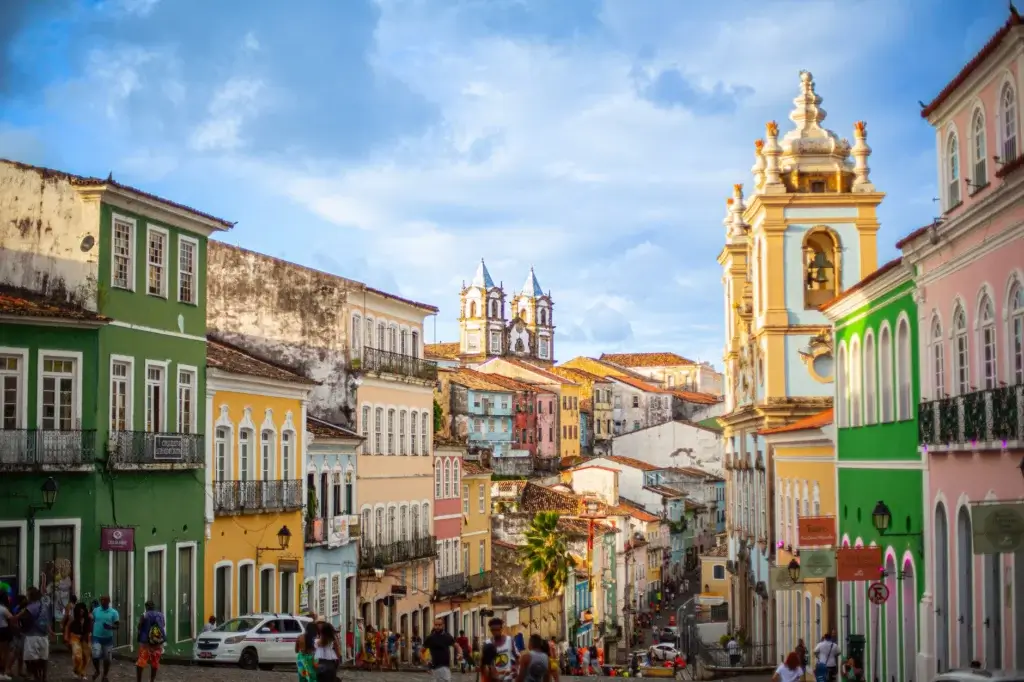
Salvador, the capital of Bahia, stands as a beacon of Afro-Brazilian heritage, offering visitors a unique cultural experience. The city’s rich history is reflected in its colorful colonial architecture and vibrant music scene. Walking through the historic district of Pelourinho, one is immediately immersed in the city’s past, with its cobblestone streets and well-preserved buildings that date back to the 17th century.
Pelourinho, a UNESCO World Heritage site, is not only visually stunning but also culturally significant. It serves as the heart of Salvador’s Afro-Brazilian community, where traditional music and dance forms like samba and capoeira can be witnessed in their most authentic forms. One of the must-visit landmarks in this area is the São Francisco Church, renowned for its baroque architecture and intricate gold-leaf interiors.
Visiting Salvador during the low season offers numerous advantages. The city’s famous beaches, such as Porto da Barra and Flamengo, are less crowded, providing a more relaxed and enjoyable experience. Additionally, the low season presents an opportunity to explore Salvador’s culinary delights without the usual tourist rush. Bahian cuisine, with its African influences, features dishes like acarajé, moqueca, and bobó de camarão, which are best savored at local eateries and street vendors.
The low season also means more affordable accommodation and fewer lines at popular attractions, allowing for a more intimate exploration of the city’s rich cultural tapestry. Whether you’re strolling through the historic streets of Pelourinho, enjoying the rhythms of Salvador’s music scene, or relaxing on its serene beaches, Salvador offers a memorable experience that is both enriching and rejuvenating.
The Pantanal: A Wildlife Enthusiast’s Dream
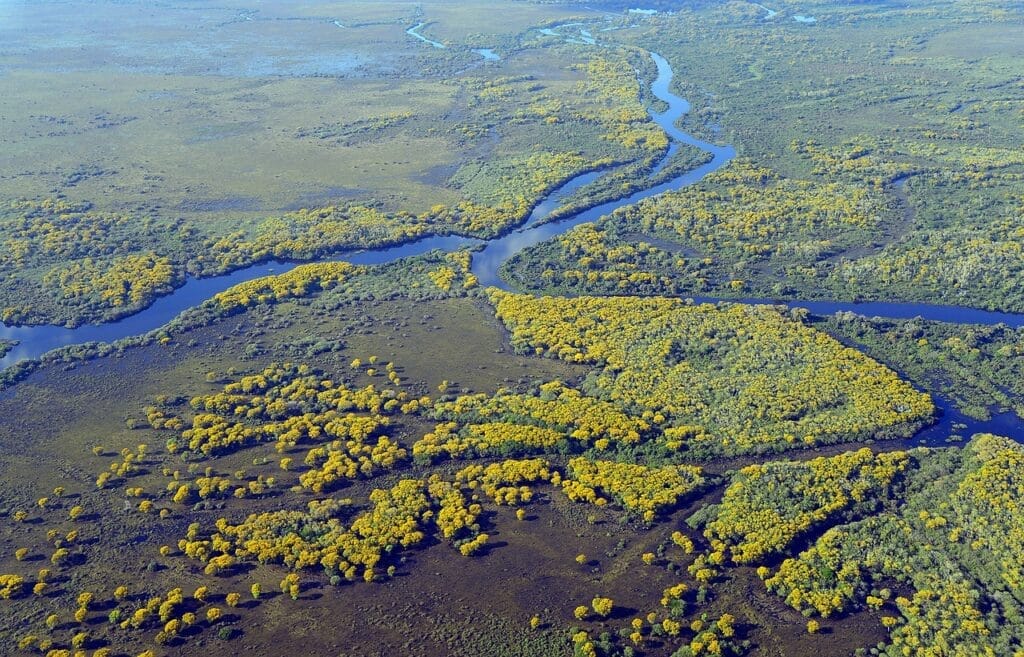
The Pantanal, renowned as one of the world’s largest tropical wetlands, is an unparalleled destination for nature enthusiasts. Spanning across Brazil, Bolivia, and Paraguay, this expansive region boasts a rich tapestry of biodiversity, making it a must-visit for those passionate about wildlife. Home to an extraordinary array of fauna, the Pantanal offers visitors the rare opportunity to observe a variety of species in their natural habitat.
Among the most notable inhabitants are the elusive jaguars, often considered the crown jewel of Pantanal wildlife spotting. These majestic predators, alongside the capybaras, the world’s largest rodents, and the stealthy caimans, create a compelling spectacle for any visitor. Bird watchers will also find the Pantanal to be a paradise, with over 650 bird species, including the vibrant hyacinth macaw, calling this region home.
The low season, particularly during the dry season from May to October, presents an optimal time for wildlife viewing. During this period, the receding water levels concentrate animals around the remaining water sources, enhancing the chances of sightings. Additionally, the dry season brings more accessible trails and pathways, allowing for a more comfortable exploration of the wetlands.
To fully immerse oneself in the Pantanal experience, eco-lodges and guided tours are available year-round. These accommodations and tours are designed to minimize environmental impact while maximizing wildlife encounters. Expert guides, often local to the region, provide invaluable insights and enhance the overall experience with their knowledge of the ecosystem and its inhabitants. Whether through boat tours, horseback riding, or on foot, the Pantanal offers a unique and intimate glimpse into one of the most vibrant ecosystems on the planet.
Florianópolis: Island Paradise on a Budget
Florianópolis, often referred to as “Floripa,” is a captivating island paradise that offers a unique blend of natural beauty and cultural richness. Situated in the southern part of Brazil, this destination is renowned for its stunning beaches, lush landscapes, and vibrant local culture. During the low season, Florianópolis transforms into an ideal getaway for budget travelers seeking tranquility without sacrificing the allure of the island.
Among Florianópolis’ myriad of beaches, Praia Mole and Joaquina stand out as must-visit spots. Praia Mole, known for its soft sands and clear waters, is a favorite among surfers and sunbathers alike. Joaquina Beach, on the other hand, is famed for its large dunes, which attract sandboarding enthusiasts. Both beaches offer a serene environment during the low season, allowing visitors to enjoy the picturesque scenery without the usual crowds.
Beyond its beautiful beaches, Florianópolis is also a haven for nature enthusiasts. The island boasts numerous hiking trails that wind through verdant forests and offer panoramic views of the Atlantic Ocean. Trails such as the Lagoinha do Leste and Costa da Lagoa provide both challenging hikes and the reward of breathtaking landscapes. These trails are particularly enjoyable during the low season, as the cooler weather and fewer tourists create a more pleasant hiking experience.
Cultural sites in Florianópolis further enrich the visitor experience. The historic center, with its colonial architecture and bustling markets, offers a glimpse into the island’s past. The Mercado Público and the Hercílio Luz Bridge are notable landmarks that reflect the island’s heritage and community spirit. During the low season, these cultural sites are less crowded, allowing for a more intimate exploration.
One of the key advantages of visiting Florianópolis during the low season is the significant reduction in accommodation costs. Budget travelers can find affordable lodging options, from charming guesthouses to budget-friendly hotels, making it easier to extend their stay. Additionally, the less crowded beaches and attractions provide a more relaxed and enjoyable experience, free from the hustle and bustle of peak tourist season.
Florianópolis during the low season offers an unbeatable combination of affordability, natural beauty, and cultural richness, making it a top destination for those seeking a budget-friendly island escape.
Iguaçu Falls: Natural Wonder at Its Best
Iguaçu Falls, straddling the border between Brazil and Argentina, is one of the most awe-inspiring natural wonders in the world. This magnificent waterfall system comprises 275 individual falls, creating a spectacular sight that attracts nature enthusiasts and adventure seekers alike. Visiting Iguaçu Falls during the low season offers a unique opportunity to experience its grandeur without the crowds, allowing for a more intimate and immersive encounter with this breathtaking natural wonder.
On the Brazilian side, the Iguaçu National Park provides several well-maintained trails and panoramic viewpoints that offer stunning vistas of the falls. The most renowned viewpoint, the Devil’s Throat, allows visitors to witness the sheer power and volume of water cascading down the 80-meter drop. Additionally, the park offers various activities such as bird watching, hiking, and eco-tours, enabling visitors to explore the diverse flora and fauna of the surrounding rainforest.
Crossing over to the Argentine side, the Iguazú National Park offers a closer and more immersive experience with the falls. The park is home to numerous walking trails and platforms that bring visitors right up to the waterfalls, providing an unparalleled sense of the falls’ magnitude and beauty. The Upper Circuit offers a bird’s-eye view of the falls, while the Lower Circuit allows for a closer encounter with the thundering cascades. The boat rides available on this side bring an exhilarating experience, taking visitors directly under the falls for a refreshing and thrilling adventure.
For those seeking an aerial perspective, helicopter tours are available on both sides, offering a breathtaking view of the entire falls system from above. These tours provide a unique angle and an opportunity to capture stunning photographs of the falls and the surrounding rainforest.
Visiting Iguaçu Falls during the low season not only ensures a more peaceful and personal experience but also provides ample opportunity to explore both the Brazilian and Argentine sides thoroughly. Whether opting for serene walks, adventurous boat rides, or exhilarating helicopter tours, Iguaçu Falls promises an unforgettable journey into one of nature’s most magnificent creations.
Manaus and the Amazon: An Off-Peak Adventure
Manaus, the gateway to the Amazon Rainforest, offers a unique and immersive experience for those venturing off the beaten path during the low season. This period, characterized by fewer tourists, provides a more personalized exploration of one of the world’s most biodiverse regions. As the starting point for many Amazon adventures, Manaus serves as the ideal base for a range of activities that highlight the natural and cultural richness of the area.
River cruises in the Amazon are a quintessential activity that becomes even more enchanting during the low season. With fewer visitors on board, travelers can enjoy a more intimate encounter with the majestic rivers and their diverse ecosystems. The reduced traffic also means a higher likelihood of spotting elusive wildlife, such as pink river dolphins, caimans, and an array of bird species. River cruises often include stops at indigenous communities, offering a glimpse into the traditional ways of life that have coexisted with the rainforest for centuries.
For those seeking a deeper connection with nature, jungle lodges provide an exceptional base for exploration. These lodges, often nestled deep within the forest, offer guided treks that reveal the secrets of the Amazon’s flora and fauna. Knowledgeable guides lead visitors through dense vegetation, pointing out medicinal plants, exotic insects, and the tracks of elusive mammals. The low season ensures that these treks are more intimate, allowing for a richer educational experience.
Manaus itself boasts several cultural attractions worth exploring. The Amazon Theatre, an opulent opera house built during the rubber boom, stands as a testament to the city’s historical significance and architectural grandeur. Local markets, such as the bustling Mercado Adolpho Lisboa, offer an array of Amazonian produce and handicrafts, providing a taste of the region’s vibrant culture. These markets are less crowded during the low season, allowing for leisurely browsing and more meaningful interactions with vendors.
Overall, visiting Manaus and the Amazon during the low season offers a unique opportunity to experience the rainforest and its cultural treasures in a more relaxed and intimate setting. Whether cruising along the rivers, trekking through the jungle, or exploring Manaus’s historical sites, travelers are sure to find an adventure that is both enriching and unforgettable.
Making the Most of Brazil’s Low Season
Traveling to Brazil during the low season presents a unique opportunity to experience the country’s diverse landscapes and rich cultural heritage in a more relaxed and cost-effective manner. One of the foremost advantages of visiting Brazil during this period is the significant reduction in travel expenses. Lower costs on flights, accommodations, and tours mean that travelers can stretch their budgets further, allowing for a more extensive exploration of Brazil’s myriad attractions.
Another notable benefit is the reduction in crowd sizes at popular tourist destinations. During the high season, iconic sites like Christ the Redeemer or the Iguazu Falls can become overwhelmingly crowded, detracting from the overall experience. In contrast, the low season offers a more serene and intimate encounter with these landmarks, enabling visitors to fully appreciate their grandeur without the hustle and bustle of large tour groups.
Moreover, traveling during off-peak times can lead to more authentic experiences. With fewer tourists around, it’s easier to engage with locals, immerse oneself in Brazilian culture, and discover hidden gems that are often overlooked during busier months. Whether wandering through the historic streets of Salvador, basking in the tranquility of the Pantanal wetlands, or enjoying the vibrant arts scene in São Paulo, the low season allows for a deeper connection with the essence of Brazil.
To make the most of a low season trip, consider booking accommodations and major activities in advance to secure the best deals. Flexibility with travel dates can also be advantageous, as it allows for adjustments based on weather patterns and local events that might enhance your visit. Additionally, being open to exploring lesser-known destinations can unveil unexpected wonders that add to the richness of your journey.
In conclusion, embracing the low season for travel to Brazil not only provides financial savings but also enriches the overall travel experience. With fewer crowds and the chance for genuine cultural interactions, it’s an ideal time to discover the beauty and diversity of this vibrant country at a more leisurely pace.

